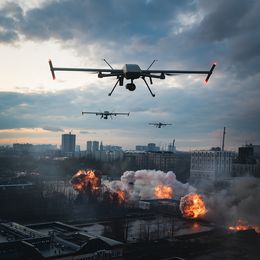The Soviet Union of yore had a straightforward way of naming places. Moscow’s railway stations, for instance, are named after destinations, broadly defined. Before the war, the beautiful Kievsky station used to send trains to Kiev in Ukraine, an erstwhile Soviet republic.
Leningradsky station flags off trains towards erstwhile Leningrad (now St. Petersburg); like the city, the station, too, has changed its name several times. To avoid any confusion, it has the same design as the Moskovsky station in St. Petersburg, from which the trains leave for Moscow. From the Kazansky station, trains travel towards Kazan and beyond; from Yaroslavsky station they go to the Yaroslav region and further to the Pacific; Belorussky station services trains going towards Belarus, also once a Soviet Republic, and so on.
Hotels and restaurants were named after Soviet cities or republics or friendly capitals, all left of the Iron Curtain. You would not have found a Hotel California or a Café du Paris but there were hotels named Leningrad, Warsaw, Berlin (remember a wall once ran through Berlin), Budapest, Belgrade and of course Moskva and the gigantic Rossiya, getting lost in which could be a pleasant pastime. Peking merited a restaurant, not a hotel, after the Sino-Soviet rift; possibly this may have since been upgraded or at least started serving Chinese food. Praga, as in Prague, a cakery in Old Arbat, sold a popular chocolate cake. Baku served Azerbaijani kababs…. you get the point.
With the same blunt directness, Nikita Khrushchev, Stalin’s successor, named the gigantic hotel he inaugurated in 1956 ‘Ukraina’ to commemorate the 300th anniversary of the Treaty of Pereyaslav following which, according to the Russian narrative, Ukraine became part of the Russian empire; the Ukrainians, to put it mildly, disagree. Situated on the sweeping Kutuzovsky Prospekt on the banks of the Moskva river, the Ukraina was one of Stalin’s seven staggering Gothic skyscrapers—known as seven sisters (or, less charitably, Stalin’s follies)—built just to make Americans gasp. Moscow State University occupies the tallest of these sisters and the Russian foreign ministry another. In its heyday, the Ukraina was considered an engineering marvel and was, with its thousand rooms, the largest in Europe.
But by the early 80s, when I lived as a junior diplomat on Kutuzovsky Prospekt (Soviet supremo Leonid Brezhnev, too, lived on the same avenue but somehow we never met in the queue for black bread), the hotel had the sad air of an ageing ballerina in laddered stockings. It was patronised mostly by official delegations who had little choice. Dim lighting permeated from the windows of its 34 floors and its long, carpeted corridors were musty. The buffet used to shut down during lunch from noon to 2pm—a common practice in Soviet Moscow. In the garden stood the granite statue of the powerful Ukrainian poet Taras Shevchenko, a cape of snow resting on his shoulders as he stared stonily at the skiers on the frozen river.
The Ukraina has since been privatised, refurbished and rebranded as the luxurious Radisson Collection Hotel. But the irony of this iconic building, always Ukraina in public memory, dominating the Moscow landscape at a beautiful bend in the river will haunt generations to come. The longer the drones fly, the bombs explode and children die, the more embittered will be this memory with the bile of war. Shevchenko will continue to stand there deep in thought and his accusatory stare will be difficult to ignore. As will be the questions from his poem “The Caucasus”, a severe castigation of Russian imperialism: “And what of blood? And what of tears?”
The writer is former ambassador to the US.


